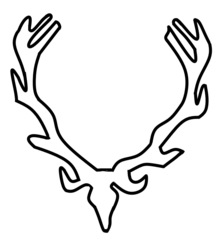118 Dywizja Strzelców (III Rzesza)
 | |
| Historia | |
| Państwo | |
|---|---|
| Sformowanie | 1 kwietnia 1943 |
| Rozformowanie | maj 1945 |
| Tradycje | |
| Rodowód | |
| Dowódcy | |
| Pierwszy | Josef Kübler |
| Ostatni | Hubert Lamey |
| Działania zbrojne | |
| II wojna światowa | |
| Organizacja | |
| Dyslokacja | |
| Rodzaj sił zbrojnych | lądowe |
| Formacja | |
| Rodzaj wojsk | piechota |
118 Dywizja Strzelców (niem. 118. Jäger-Division) – jedna z niemieckich dywizji strzelców. Utworzona została w kwietniu 1943 w Serbii z 718 Dywizji Piechoty.
Szlak bojowy

Początkowo dywizja stacjonowała w Serbii pełniąc obowiązki okupacyjne i zwalczając partyzantkę. Później została przerzucona do Hercegowiny a latem 1944 na wybrzeże Dalmacji. Na początku 1945 jednostkę skierowano na front wschodni i walczyła na Węgrzech i w Austrii. Szlak bojowy dywizja zakończyła w Klagenfurcie w maju 1945, gdy poddała się wojskom brytyjskim[1].
Dowódcy
- Generalleutnant Josef Kübler (od 1 kwietnia 1943),
- Oberst Rudolf Gertler (w lipcu 1944)
- Generalmajor Hubert Lamey (od 10 lipca 1940 do końca)[2].
Skład
- 738 pułk strzelców
- 750 pułk strzelców
- 668 batalion artylerii (później pułk)
- 118 batalion cyklistów
- 118 batalion niszczycieli czołgów
- 118 batalion inżynieryjny
- 118 batalion łączności
- 118 dywizyjny oddział zaopatrzenia
Przypisy
- ↑ Mitcham jr. 2010 ↓, s. 249.
- ↑ Mitcham jr. 2010 ↓, s. 249-250.
Bibliografia
- Samuel W. Mitcham jr.: Niemieckie siły zbrojne 1939-1945. Dywizje strzeleckie i lekkie. Ordre de Bataille. Warszawa: Belona S.A., 2010. ISBN 978-83-11-11655-9.
Linki zewnętrzne
Media użyte na tej stronie
The Imperial Eagle or Emblem of the German Empire (German Reich, used 1935–1945), which features an eagle looking over its right shoulder, that is, looking to the left from the viewer's point of view. It is similar to the Parteiadler or Emblem of the Nationalsozialistische Deutsche Arbeiterpartei (NSDAP; known in English as the National Socialist German Workers' Party, or simply the Nazi Party), but the eagle of the latter is looking over its left shoulder, that is, looking to the right from the viewer's point of view.
Niemieccy żołnierze ze 118. dywizji strzelców w marszu w Bośni.
Autor: RRskaReb, Licencja: CC BY-SA 4.0
118. Jaeger Division, German Army, World War II
Flag used by the puppet Government of National Salvation of Milan Nedić, 1941-44. The colours are derived directly from the source material, following PCRS cleanup and restoration of the latter.
The Imperial Eagle or Emblem of the German Empire (German Reich, used 1935–1945), which features an eagle looking over its right shoulder, that is, looking to the left from the viewer's point of view. It is similar to the Parteiadler or Emblem of the Nationalsozialistische Deutsche Arbeiterpartei (NSDAP; known in English as the National Socialist German Workers' Party, or simply the Nazi Party), but the eagle of the latter is looking over its left shoulder, that is, looking to the right from the viewer's point of view.




